
Joe Pathetic
gamer level 6
10584 xp
10584 xp
followers
17
17
Use my invite URL to register (this will give me kudos)
https://boardgaming.com/register/?invited_by=joepathetic
profile badges




recent achievements

Knight-errant
Be loyal to the general Good. Give 25 hearts each to 10 different games.
Be loyal to the general Good. Give 25 hearts each to 10 different games.

The Gold Heart
Give 10 Gold Hearts to games that you love.
Give 10 Gold Hearts to games that you love.

Novice Reviewer
Review 5 games and receive a total of 140 positive review ratings.
Review 5 games and receive a total of 140 positive review ratings.

Critic - Level 2
Earn Critic XP to level up by completing Critic Quests!
Earn Critic XP to level up by completing Critic Quests!
Player Stats
Critic (lvl 2)
330 xp
330 xp
Explorer (lvl 3)
964 xp
964 xp
Professor (lvl 2)
406 xp
406 xp
Reporter (lvl 1)
140 xp
140 xp
About Me
Grew up playing classic board games that my mom would pick up randomly at garage sales. For years played video games, but now that I'm in my 30's, the call for something more "tactile" has awoken again. Now, I'm on a quest to get my wife to appreciate all these things as much as I do! After a short stint with Magic the Gathering, we've moved on Lord of the Rings and Game of Thrones LCG. After finding this site, I think we've just stumbled into a much larger world!

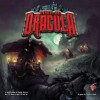



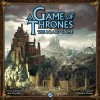







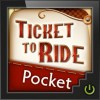


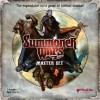
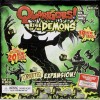
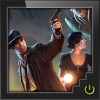
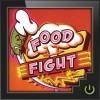
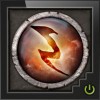

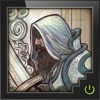

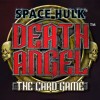

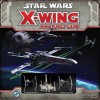
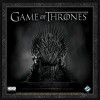

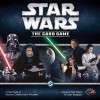
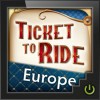


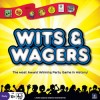
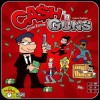






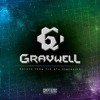
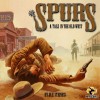



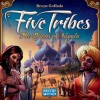
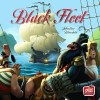

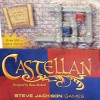





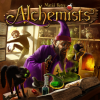
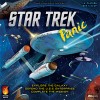

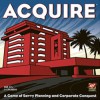

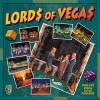


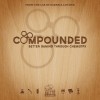



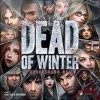
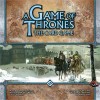


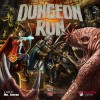








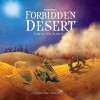



Gloom
“Gloom” by Atlas Games is a very unique and innovative card game for 2-4 players. The game puts you in control of one of 4 twisted families: Castle Slogar, Hemlock Hall, Blackwater Watch and Dark’s Den of Deformity. Your goal is simple: make your family have the worst day possible and then put them out of their misery by killing them off. The game ends as soon as one family is completely killed and whoever has the family with the lowest “self-worth” points wins the game.
Components:
Unquestionably, the major draw to Gloom is its amazing translucent cards. The cards are made of a floppy, see-through plastic (which, by the way, shuffle like a dream). Incredible art work is printed on both sides. What makes the game truly innovative is the way the cards stack. Through the game, players will be playing modifier cards on themselves and other players. Since the cards are translucent, elements from the previous cards either show or are obscured by the new cards played on top. This makes the point modifiers placed on the cards easily visible for each character. As the Atlas Games’ website puts it, “You’ve got to see (through) this game to believe it!”. It’s wildly clever and works really well. You do truly have to see it in action to appreciate it.
Storytelling mechanic:
The game rules encourage players to “tell the story” as the game unfolds. Perhaps Lord Wellington-Smythe was pestered by poltergeists, which in turn caused his daughter Lola to be written out of the will (which then caused her to go mildly mad). So how could it be that Lola was wondrously well wed? And what effect will that have on the Twins and the Butler? Telling the story isn’t required to play the game, but I feel that the game heavily suffers if you don’t. To see the storytelling in action, I strongly encourage you to watch the play through on Wil Wheaton’s webshow “TableTop” (available from the video tab on this page or through youtube.)
The Theme:
Gloom’s artwork and theme lends itself to being spooky and macabre, but still stays light-hearted in a cartoony way. If you are a fan of The Addams Family, A Nightmare Before Christmas, Coraline, Tim Burton or just plain spooky Halloween fun, then this game might be right up your alley.
Throw your own Gloom party:
Atlas Games has also thought of something that I think is quite unique for any Board or Card Game. Their website provides a “How to Host a Theme Party”, with complete instructions on the Setting, Invitations, Music and Attire. Combine this with the fact that the website also allows you to print your own custom playing cards with fonts for the different families of the game. Someone could really run with this idea and throw a full blown Gloom bash! This idea is something you don’t often see and wanted to applaud Atlas Games for their effort to make this game come to life!
Cons / Concerns
Lasting power / Repetition
After you get over the amazement of the translucent stacking cards and have told a few tales on how your family encountered their horrible series of events before their sweet release of death, the game can start to feel a little repetitious. There’s only so many ways you can tell the same tale of unfortunate events. Since it takes creative effort on your part to weave a story, eventually you may forgo the effort of “making the game go” and dump the story telling all together. Unfortunately, once you do that, you are left with a game that is mechanically “just okay”. We burned out quickly with the main set, so I purchased one of the 3 expansion packs. (Unfortunate Expeditions). Although the new cards did add more modifiers and a new mechanic, it still just felt like more of the same. After deciding we didn’t want to play with the expansion anymore, it was actually a headache separating the expansion out once it’s integrated. (Had to find a decklist from the website and rebuild from scratch)
Flavor Text and Game Modifiers Text are too similar:
Every card in the game has flavor text on it. That’s fine, in fact, most of it is quite funny. The problem is some of the cards also have additional game state modifiers that may alter your hand size, cause you to skip a turn, or some other ongoing game effect. Since the fonts and colors of these texts are so similar, usually stacked on top of each other in the same text box, it’s VERY easy to overlook an effect that is currently in play. Combine this with the fact that cards are constantly getting covered up. Soon you will find yourself sitting on a family inundated with text, most of it of no consequence and yet one card is absolutely crucial to game play. You’ll want to really stay focused on what modifiers are effecting what, but that’s pretty hard to do when the other part of your brain is too busy trying to tell the story about how Cousin Mordecai was taunted by tigers before finding fame at a feast. Designing the critical game text to better stand out from the flavor text would have been a huge help.
Card Ink and Storage:
I’ve read a few reviews saying that the ink on the cards (particularly in the initial runs of this game) had a tendency to smear. Luckily, my copy hasn’t had this problem, but I know I would be pretty gloomy if I got a bad batch. This is doubly concerning seeing as these aren’t really the type of cards that are conducive to putting in sleeves (since you need to be able to see through them clearly when they stack). Another issue that I immediately came up upon getting the expansion was just plain storage. The expansions cards immediately blend right into the core deck, but the core deck box just holds the core deck amount of cards. If you picked up the 3 expansions, the Cthulu Gloom set and the Cthulu expansion, that’s a huge stack of cards that is going to require a new deck storage solution to hold it in. Otherwise, you are just going to have to cut the one big deck down into it’s 5 or 6 little boxes.
Parental Concern:
The game is rated for ages 8 and up. Seeing as the point of the game is dragging your family through horrifically painful plights and then murdering them off so you can win the high score may not sit well with some parents. That said, the game does do a great job in keeping as light and kid friendly as a Halloween type card game can be. It’s never more graphic than a cartoon skull or a brain sticking out of a teddy bear’s head, but I could see why some parents might object.
Too Long, Didn’t Read:
Gloom is an innovative and wonderfully spooky romp of a card game that shines bright at first but can fade fast. I attribute this mostly to the fact that you need to actively participate in the storytelling aspect to get the most out of it. If you are the type of gamer that just wants to sit down and play the game without having to spend a ton of effort to “making the game fun”, then this might not be the game for you.
Once you remove the storytelling aspect, you are still left with a decent card game, but one that can also feel repetitious. Some ink smearing issues along with some design concerns regarding the sameness of fonts on the flavor text/game text may leave you a little bummed. There might also be some parental concern with its appropriateness. (You are actively killing off your family, after all).
Gloom may just be the perfect light card game you pull out every now and then to showcase off its novelty, but the only Gloom I get is from the amount of dust its box has collected on our shelf.